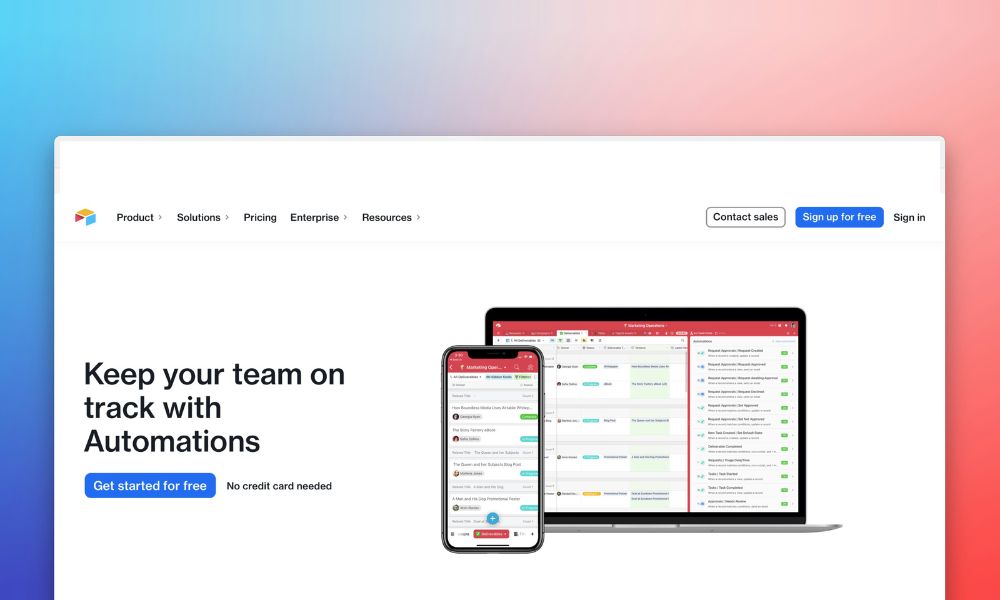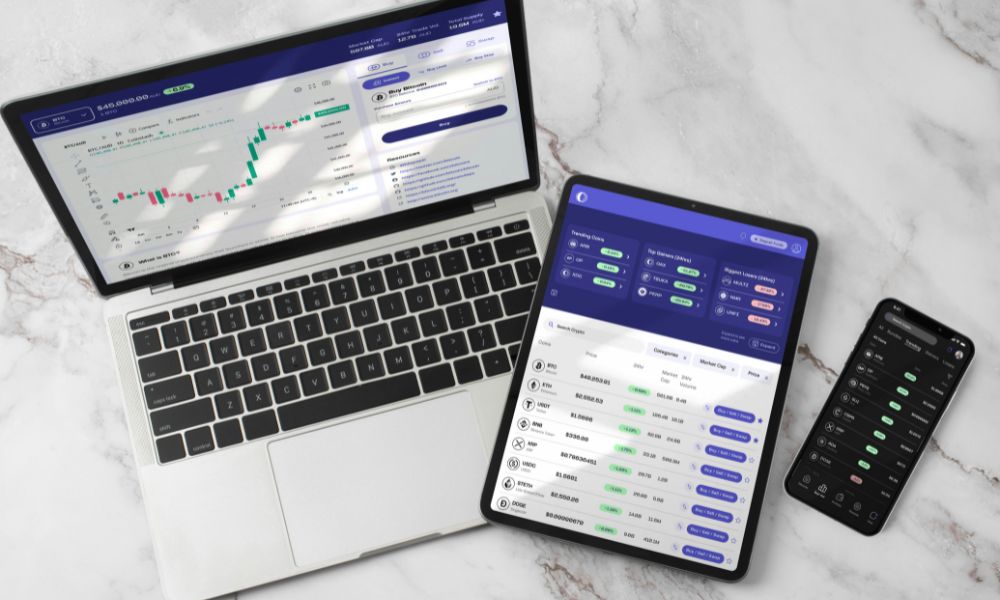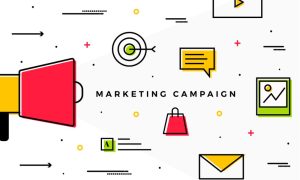
Influencer marketing is evolving faster than ever, and the teams that grow efficiently are the ones who let technology handle the heavy lifting. Managing creators, deadlines, and reports used to take hours of manual work, but automation has changed that. Today, smart systems take care of repetitive tasks, so brands can focus on what matters most: strategy, creativity, and real connections.
Running influencer campaigns once meant endless spreadsheets, manual DMs, and late-night status updates. Every post, report, and payment required a dozen small tasks that quietly drained time and focus. For small brands, it was manageable. For larger teams, it quickly turned into chaos.
Then automation entered the scene. With AI tools and connected workflows, brands started streamlining how they discover influencers, send briefs, track performance, and even process payments, all without losing the creative spark that makes influencer marketing work.
As automation becomes a bigger part of influencer marketing, knowing where to start makes all the difference. This guide walks through the essentials: the tools, systems, and best practices that help brands scale campaigns while keeping relationships real.
Influencer Marketing Automation at a Glance:
- Definition: Using software to streamline influencer campaign workflows
- Core Benefit: Saves time while maintaining authenticity
- Best Use: Automate logistics, not human connection.
- Key Tools: Discovery, scheduling, reporting, payments
- Goal: Automate logistics, not relationships
What Is Influencer Marketing Automation? (It’s Not About Robots Replacing People)
Influencer marketing automation is the use of software and technology to simplify and scale the repetitive tasks behind campaigns, things like discovery, outreach, reporting, and payments. It’s the system that keeps everything moving while freeing teams to focus on creative work and strategy.
At its core, automation doesn’t replace people. It replaces the busywork that keeps them from doing their best work. Instead of manually searching for profiles, sending dozens of emails, and tracking results in scattered spreadsheets, marketers can use connected tools to coordinate everything in one place.
When done right, automation creates space for creativity, not distance from it. It allows brands to stay consistent, influencers to stay informed, and campaigns to stay on track. The process becomes smoother, faster, and easier to repeat without losing the personal touch that makes influencer marketing work in the first place.
The core philosophy: automate the process, not the relationship.
The golden rule of influencer marketing automation is simple: let technology handle the logistics, and let people handle the relationships. Automation can schedule posts, send reminders, and update dashboards, but it can’t replace genuine human connection.
Relationships still drive performance. The trust between a brand and a creator determines how authentic the content feels and how the audience responds. Automation should make those interactions easier, not colder.
When brands use automation to clear the path instead of control it, collaboration becomes more natural. Creators feel supported, teams stay organized, and campaigns run smoothly without losing the spark that makes influencer marketing powerful.
The 4-Growth Levers You Unlock with Strategic Automation
Automation in influencer marketing isn’t just about convenience. When built with the right systems, it becomes a growth engine, helping teams move faster, stay organized, and make smarter decisions. These are the four main levers that automation unlocks.
1. Time Savings and Efficiency
Every influencer campaign involves dozens of small, repeatable steps, from vetting creators to sending briefs and tracking deliverables. Automating these tasks removes friction and saves hours that can be reinvested into creative strategy and relationship management.
At Hypefy, we’ve automated every part of the influencer onboarding process to remove unnecessary back-and-forth. Our automated workflows handle invitations, briefs, and approvals in one place, saving our team hundreds of hours while improving accuracy and speed. It’s a clear reminder that when repetitive tasks take care of themselves, brands and creators can spend their time on what truly matters, creative work and meaningful collaboration.
2. Scalability: Managing More Creators Without the Chaos
As campaigns grow, manual coordination starts to break down. Tracking hundreds of creators through email threads and spreadsheets leads to missed deadlines and data errors. Automation allows teams to manage more influencers at once without losing control.
With structured workflows and pre-built automations, onboarding, approvals, and payments can all happen in parallel. This makes it possible to scale campaigns from five to fifty creators with the same level of precision and oversight.
3. Reduced Errors and Consistent Workflows
Human error is one of the biggest risks in campaign execution: missed deadlines, wrong tracking links, or incomplete briefs. Automated systems follow defined rules every time, ensuring tasks happen consistently and accurately.
This consistency also builds trust within your team and with creators. Everyone knows what to expect, and every campaign follows a reliable rhythm from start to finish.
4. Better Measurement, Reporting, and Analytics
Automation makes tracking results easier and more transparent. Instead of manually collecting screenshots or piecing together performance data, reporting tools automatically pull metrics from each post and platform.
This gives marketers real-time visibility into campaign performance, from reach and engagement to conversions and ROI. When data flows automatically, decisions become faster and more informed, which means you can optimize on the go rather than after the campaign ends.

Where to Automate: A Stage-by-Stage Guide to Your Campaign Workflow
Not every part of influencer marketing should be automated. Some tasks thrive on human creativity and personal touch, while others are repetitive enough to hand off to technology. The goal is to automate what slows you down, not what makes your brand feel human.
Here’s how to decide what belongs in your automation system, and what should stay manual.
What to automate: discovery, outreach, scheduling, reporting, payments
Automation works best for structured, repeatable tasks that follow clear rules. These steps often take the most time yet add the least creative value when done manually.
- Influencer discovery: Use AI-powered search tools like Hypefy Discover to find creators that fit your audience, budget, and niche faster than manual research ever could.
- Outreach and communication: Templates and automated follow-ups can save hours while keeping communication organized.
- Scheduling and reminders: Automated calendars and workflow triggers ensure posts, reviews, and approvals go out on time.
- Reporting: Real-time analytics dashboards replace manual data collection.
- Payments: Automating contract setup and payouts keeps finances accurate and timely.
Together, these automations remove friction from the logistics side of campaigns, letting your team focus on storytelling instead of spreadsheets.
What to avoid automating: relationship-building, negotiation, creative strategy
Some parts of influencer marketing rely too heavily on intuition, trust, and tone to be automated effectively. These are the moments where human interaction turns a transaction into a partnership.
- Relationship-building: Personalized messages, check-ins, and creative collaboration should always come from a real person.
- Negotiation: Payment, terms, and expectations are best handled through genuine discussion.
- Creative strategy: Automation can help organize ideas but not replace human insight about what resonates with an audience.
Authenticity still drives performance. Automation supports relationships, but people sustain them.
Best practices for smart automation (use templates, fallback checks)
Automation can either simplify your workflow or complicate it if not set up carefully. These best practices keep it effective and sustainable:
- Use templates wisely: Create base templates for briefs, outreach, and follow-ups, but personalize each before sending.
- Add fallback checks: Always set review points before automation goes live to avoid errors or tone mismatches.
- Integrate systems: Connect discovery, communication, and reporting tools into a single ecosystem like Hypefy to avoid data gaps.
- Review regularly: Revisit your automations every few months to adjust to new campaign goals or platform changes.
The right automation doesn’t run on autopilot, it runs with direction. It should feel like a well-tuned engine that powers creativity, not a machine that replaces it.
Building an Automation Workflow for Influencer Campaigns
Automation works best when it’s designed like a map. Each step in the journey connects to the next, and every automation supports a specific goal. A well-built workflow helps you stay organized, reduce manual work, and keep campaigns running smoothly from start to finish.
Here’s how to build one that actually works in practice.
Step 1: Define roles & stages (which steps get partial or full automation)
Start by outlining every stage of your influencer campaign and who is responsible for each part. From discovery and outreach to reporting and payment, define where automation should assist and where people should lead.
Some steps may need full automation, like sending briefs or collecting performance data. Others may only need partial automation, such as reminding your team to review content before posting. The clearer your map, the smoother your workflow will run.
Step 2: Select tools & platforms (influencer CRM, scheduling, analytics)
The tools you choose determine how well your system works. Look for platforms that centralize influencer management, content tracking, and communication.
For example, a platform like Hypefy combines influencer discovery, campaign management, and analytics in one environment. That means your outreach messages, performance reports, and payments all stay connected instead of scattered across different tools.
When systems work together, you reduce manual entry and eliminate the risk of things getting lost between stages.
Step 3: Map triggers & automations (e.g. auto-send brief after approval, auto follow-up)
Once your structure is in place, decide when automation should take over. Triggers are the signals that start a task automatically. For instance:
- After a creator accepts a campaign invite, the system sends a pre-approved brief.
- After content goes live, a reminder triggers for performance tracking.
- After a campaign ends, a payment workflow starts automatically.
These small automations keep the process moving forward without constant check-ins or missed deadlines.
Step 4: Monitor, audit & iterate workflows
Even the best automation setup needs maintenance. Review your workflows regularly to make sure they’re still aligned with your campaign goals.
Check if emails are reaching the right people, data is syncing correctly, and timelines still make sense. If something feels clunky or unnecessary, refine it. Automation should evolve with your strategy, not run unchecked in the background.
Step 5: Integrate with human oversight
Automation is powerful, but it works best when paired with human judgment. Build checkpoints where team members review content, approve messages, or handle exceptions manually.
This oversight keeps automation from feeling robotic and ensures that every interaction with influencers still feels personal and intentional. The system handles the structure, while people handle the connection, and together they keep your campaigns running both efficiently and authentically.

The Human Touch: What You Should Never Automate
Automation can make influencer marketing faster and more efficient, but it can’t replace the connection that drives real results. Relationships, trust, and collaboration are the foundation of this industry. The brands that remember this build partnerships that last long after a campaign ends.
Here are the moments where automation should step aside and let people take the lead.
The Initial Partnership Pitch
The first message you send to an influencer shapes everything that follows. It’s your chance to show that you’ve done your homework and that your brand truly fits their style and audience. A mass-sent email can never create that impression.
Instead, write a personalized introduction that references the influencer’s content, tone, and values. Mention a post you liked or a campaign that inspired you. When your outreach feels genuine, creators are far more likely to respond with the same energy and enthusiasm.
Creative Collaboration and Feedback
Creativity doesn’t follow templates. While automation can share briefs and deadlines, the actual process of shaping ideas requires conversation.
When you brainstorm with influencers or review their drafts, keep communication human. Offer feedback that encourages their creativity rather than just enforcing your brand rules. A call or personal message goes much further than an automated note saying “revisions needed.”
Influencers want to feel like collaborators, not contractors. Authentic discussion helps both sides find the balance between creative freedom and brand goals.
Crisis Management and Complex Negotiations
When problems arise, whether it’s a missed post, a content error, or a disagreement about deliverables, automation can make things worse. Sensitive issues demand empathy and clarity, not canned responses.
If a situation feels complicated or emotional, pick up the phone or write a thoughtful message yourself. Direct communication rebuilds trust faster than any automated workflow ever could. The same applies to negotiations over pricing or long-term contracts. These conversations rely on tone, understanding, and flexibility that only humans can provide.
Building Genuine Rapport and Long-Term Relationships
Influencer marketing works best when relationships extend beyond one campaign. Long-term partnerships lead to better performance, more trust, and stronger storytelling. None of that happens through automation.
Check in with creators after a campaign ends. Ask about their experience, share results, and thank them personally. When influencers feel seen and valued, they become genuine advocates for your brand.
Influencer relationship management (IRM) isn’t about sending messages faster, it’s about building connections deeper. Automation should make room for those connections to happen, not replace them.
Pitfalls and Risks of Over-Automation
Automation can be a powerful advantage, but it’s not a set-and-forget system. When overused or poorly managed, it can damage relationships, distort data, and make campaigns feel mechanical. Recognizing these risks early helps you avoid the mistakes that turn efficient workflows into cold experiences.
Losing Authenticity – Sounding Robotic to Creators or Audiences
The biggest danger of over-automation is losing the human tone that makes influencer marketing work. If outreach messages sound copied, or if follow-ups feel like reminders from a machine, creators notice.
Audiences can feel it too. Automated comments or repetitive captions can make branded posts look forced. Automation should always work behind the scenes, not at the expense of personality. The goal is to make processes faster while keeping voices authentic.
Automation Failures and Broken Workflows
Every automated system depends on correct setup. A single missed condition or wrong trigger can send briefs too early, skip approvals, or double-send payments. These breakdowns don’t just waste time; they create confusion and frustration for both your team and the creators involved.
To prevent this, review your workflows regularly and test each automation before launching a campaign. Automation should save time, not add troubleshooting to your to-do list.
Data Errors and Misattribution
Automation can simplify reporting, but it also introduces new risks if the data isn’t handled carefully. A broken link, a missing UTM, or a misconfigured integration can lead to inaccurate results. That means some influencers might appear under- or over-performing when the problem is in the setup, not their content.
Keep human eyes on your data. Periodic manual checks ensure that the numbers behind your campaigns actually reflect reality.
Alienating Creators Who Prefer a Custom Touch
Not every influencer wants to interact with automated systems. Some prefer personal contact and flexible collaboration. When everything from outreach to reporting feels automated, creators can feel like they’re just another line item in a campaign.
Balance automation with personalization. Even small gestures, like checking in directly or customizing a thank-you note, remind influencers that there’s a person behind the system who values their work.

Examples of Influencer Marketing Automation
The best way to understand the impact of automation is to see it in motion. Across the industry, brands are cutting down hours of manual work and gaining precision by automating routine processes. Here’s how it looks when the right systems come together.
Brands Automating Onboarding, Briefing, and Outreach
One of the most time-consuming parts of influencer marketing is getting everyone aligned before a campaign starts. Reaching out, confirming interest, sending briefs, and tracking who replied can take days without automation.
At Hypefy, the entire process runs through an automated onboarding system. Once a brand selects creators for a campaign, each influencer receives a personalized outreach message, digital brief, and content guidelines automatically. The system also tracks responses and status updates in real time.
This streamlined process eliminates the back-and-forth that often slows campaigns down, allowing marketers to move from planning to live content in a fraction of the time.
Workflow Automation in Action
Many global brands now rely on automated campaign dashboards to oversee hundreds of creators. For example, beauty brands often use integrated workflow tools to automatically track post performance, content approvals, and influencer payments, cutting project timelines by weeks.
Automation doesn’t end once creators start posting. Hypefy’s campaign automation handles everything from content approval to performance tracking in one dashboard.
When influencers upload their content, the system automatically verifies deliverables, schedules posts, and collects performance metrics once the content is live. Team members receive alerts if something requires manual review, ensuring that nothing falls through the cracks.
What once required multiple spreadsheets and daily check-ins now happens through a connected workflow that keeps everyone aligned and accountable.
Time-Saving Hacks: How Brands Save 100+ Hours a Month with Automation
Brands that automate their influencer processes often report saving more than 100 hours each month. That time isn’t just saved; it’s reinvested into creativity, analytics, and stronger partnerships.
Automation removes repetitive administrative work, like sending reminders, verifying post links, and compiling reports, which frees teams to focus on campaign performance and long-term strategy.
In many cases, those saved hours translate directly into better outcomes: faster launches, improved collaboration, and measurable ROI gains.
When automation is done right, it doesn’t just make campaigns more efficient. It creates space for better ideas, deeper partnerships, and a more sustainable way to grow.
Key Takeaway: Automate the Busywork, Amplify the Creativity
Influencer marketing automation isn’t about removing people from the process, it’s about giving them more time to do what only humans can. When routine tasks run on autopilot, teams can focus on strategy, storytelling, and building meaningful relationships with creators.
The real win comes from balance. Automate the logistics, but keep creativity, communication, and trust human. That’s where campaigns shift from mechanical to memorable, and where automation stops being a shortcut and becomes a multiplier for growth.
If you’re ready to bring efficiency and creativity together, explore how Hypefy’s influencer tools and campaign management system can help you scale your campaigns: faster, smarter, and with the human touch that makes all the difference.



